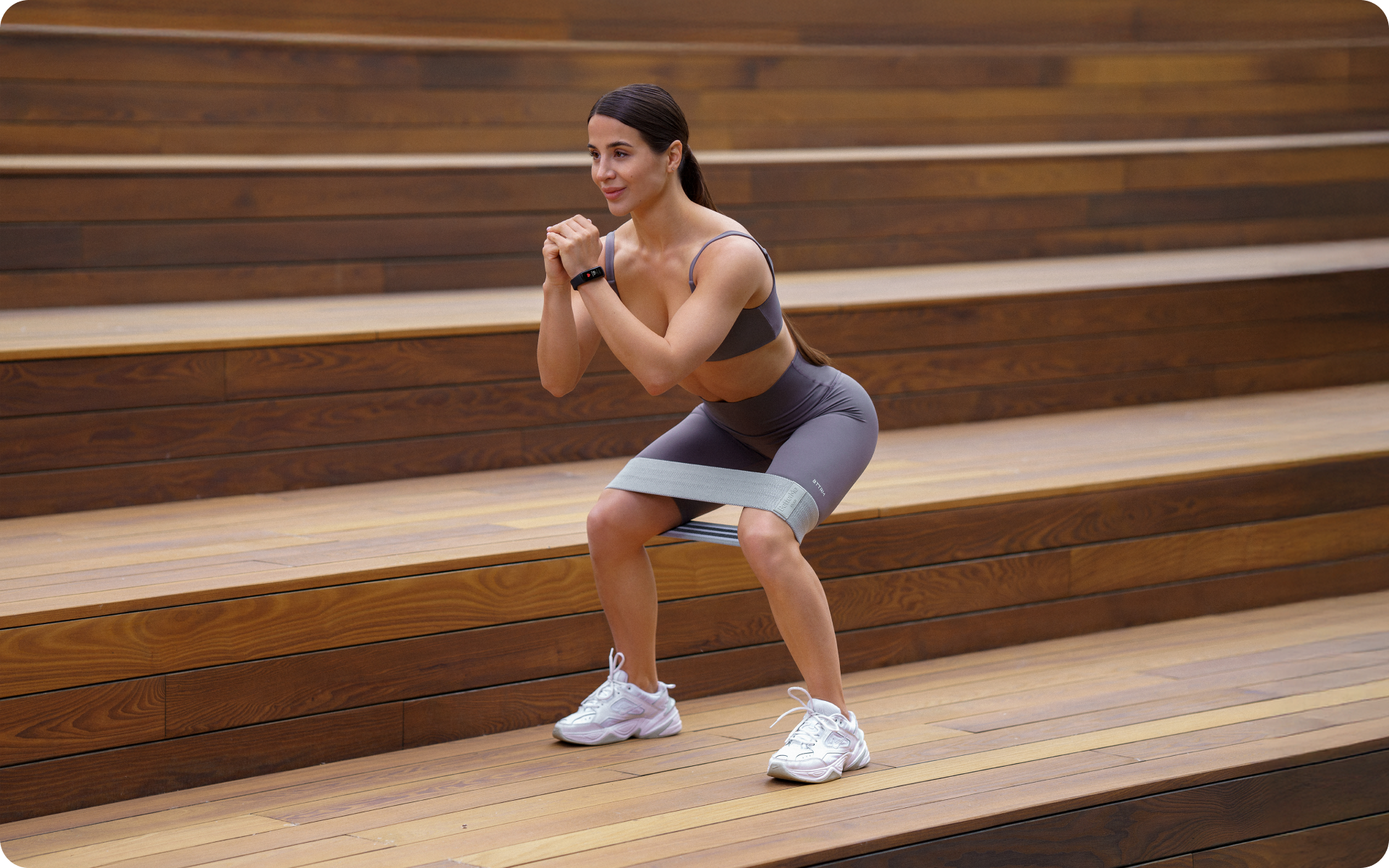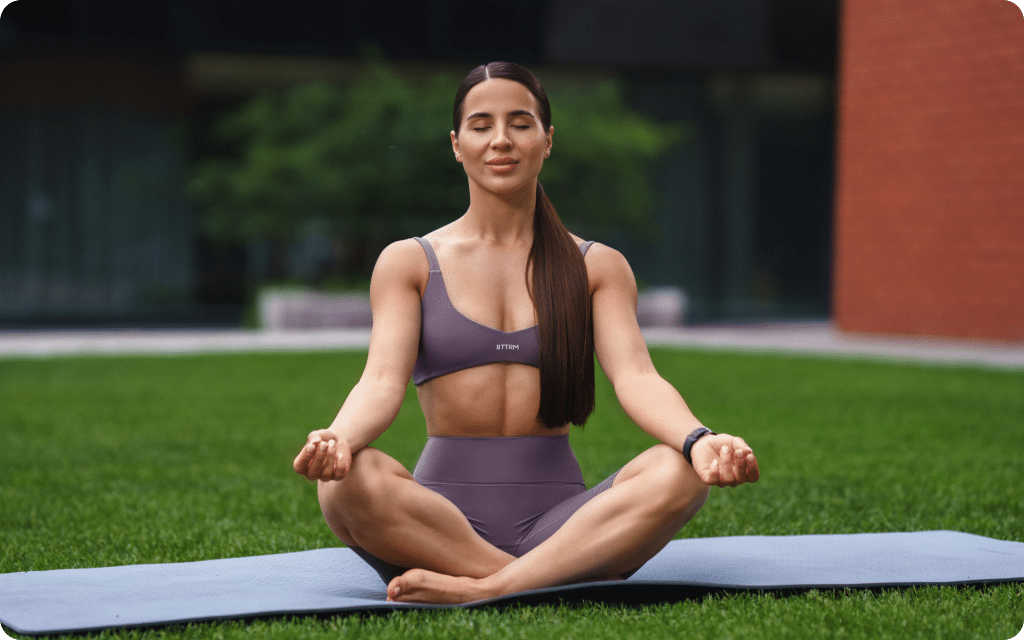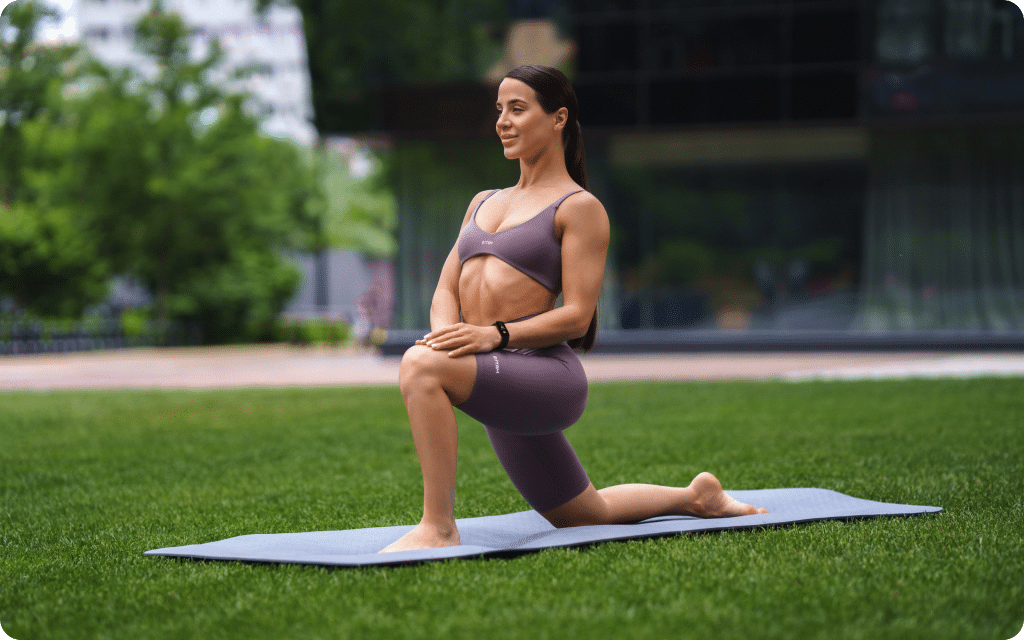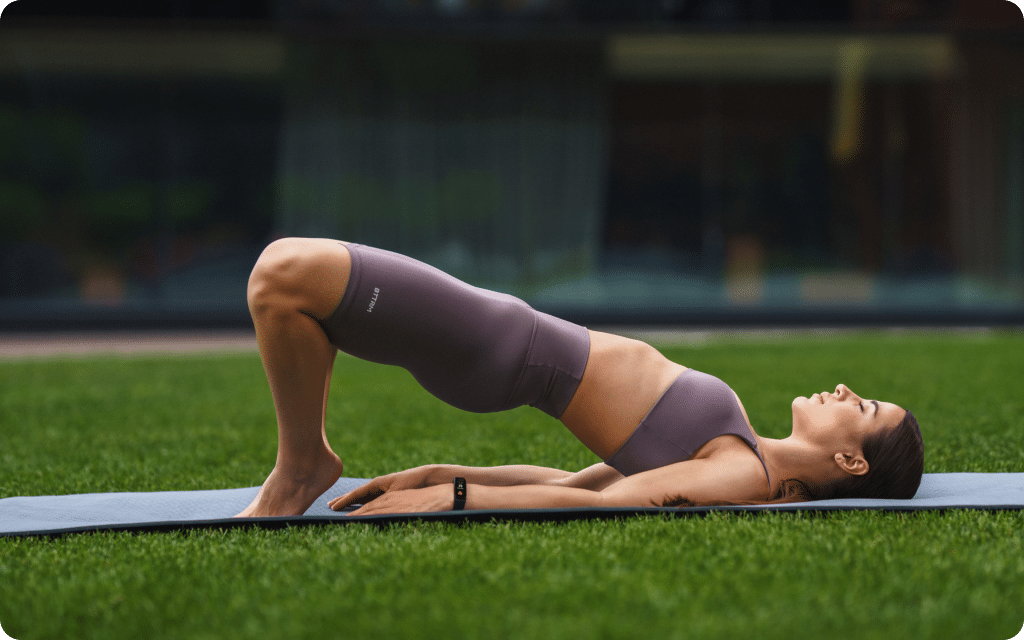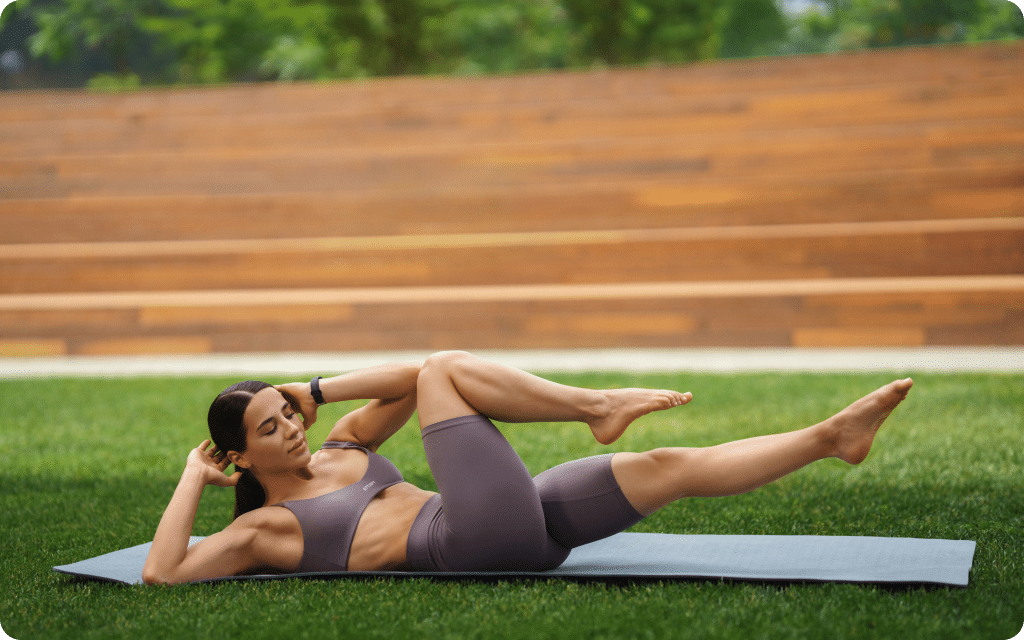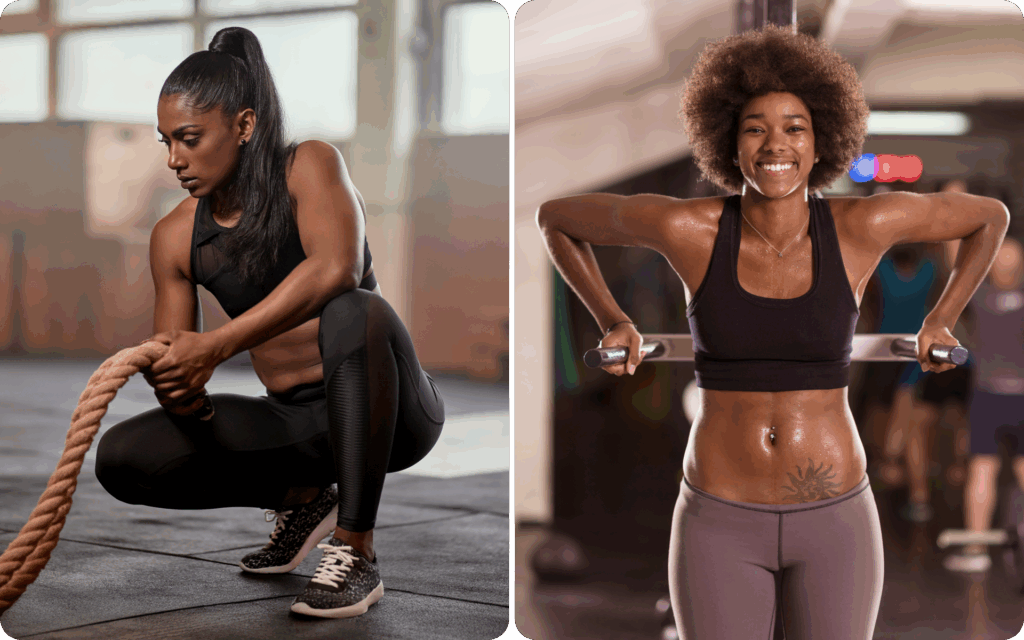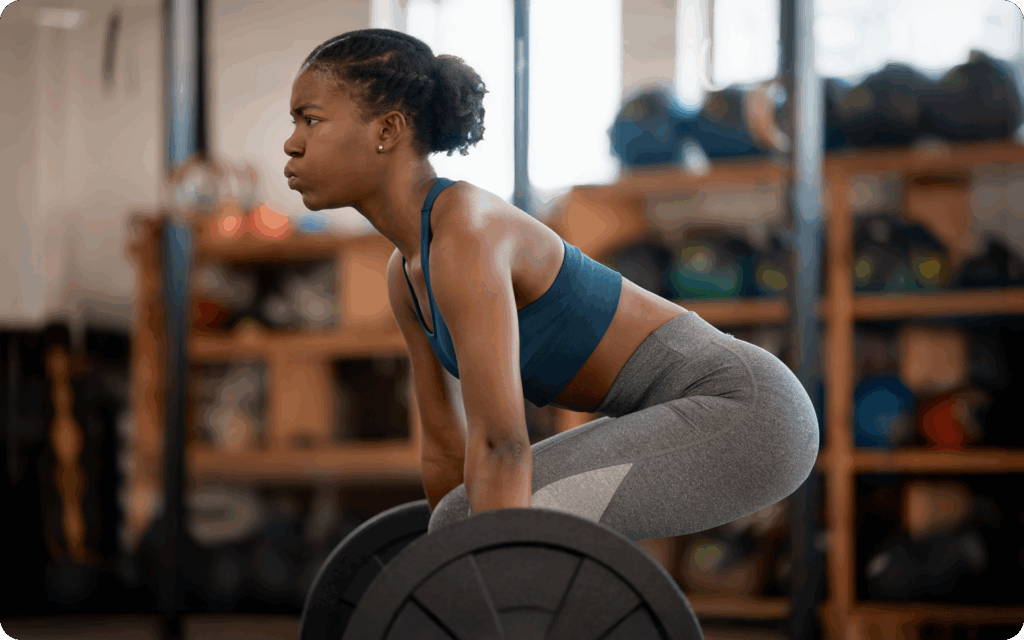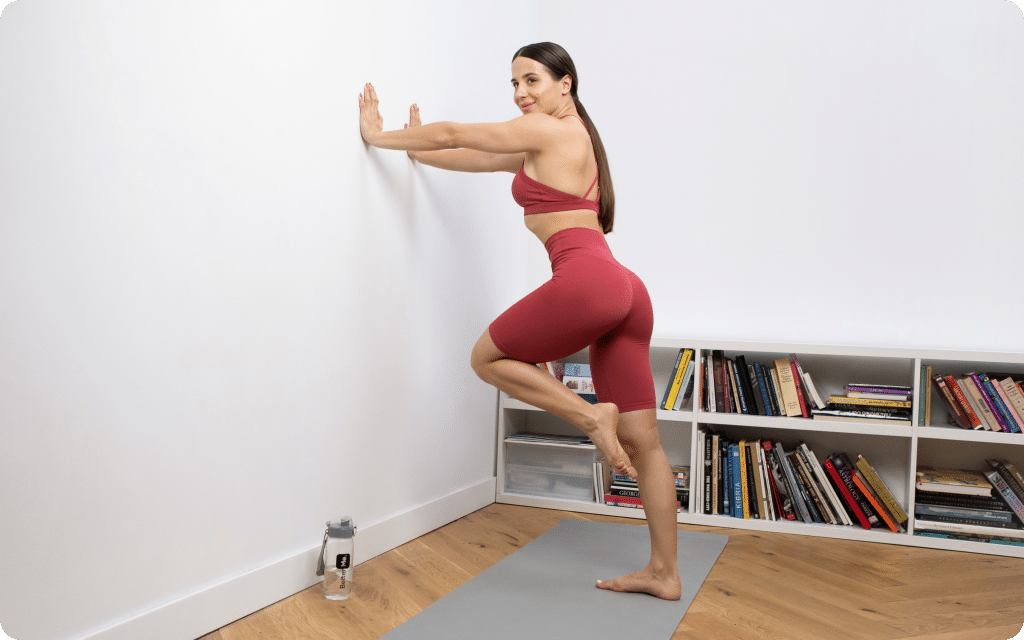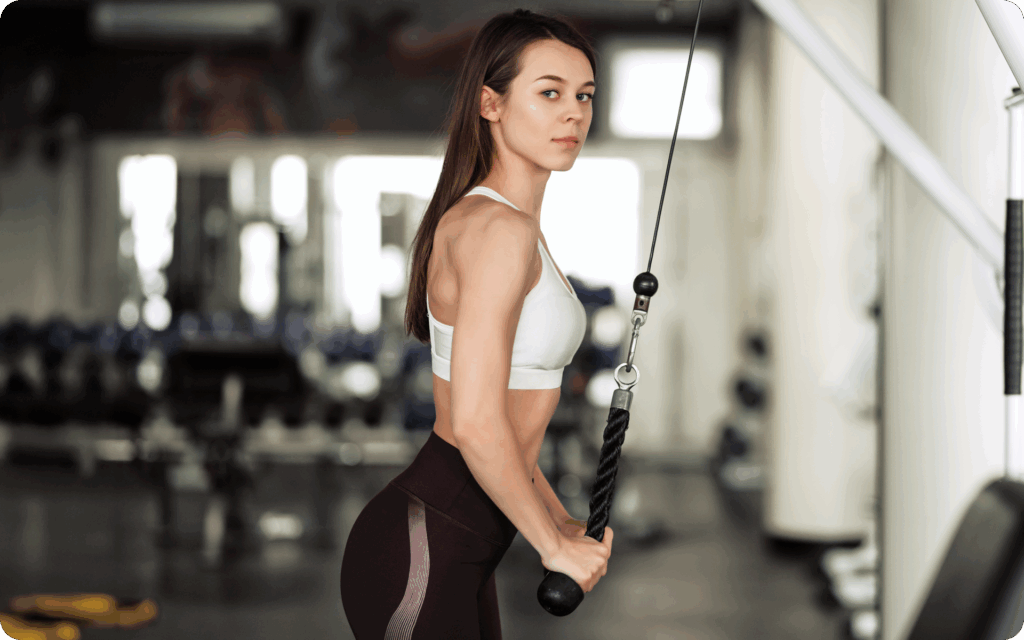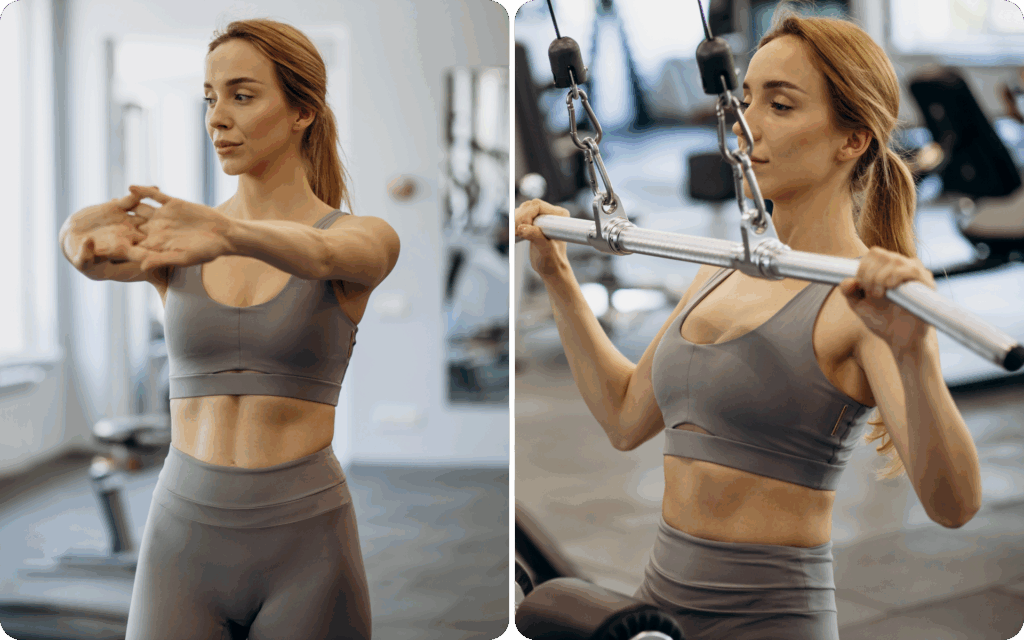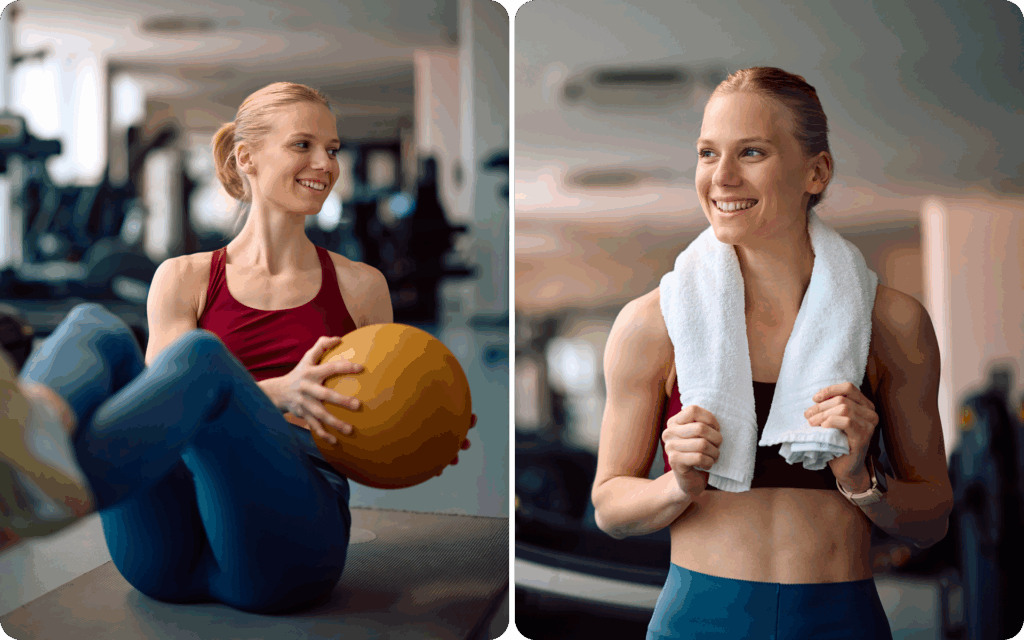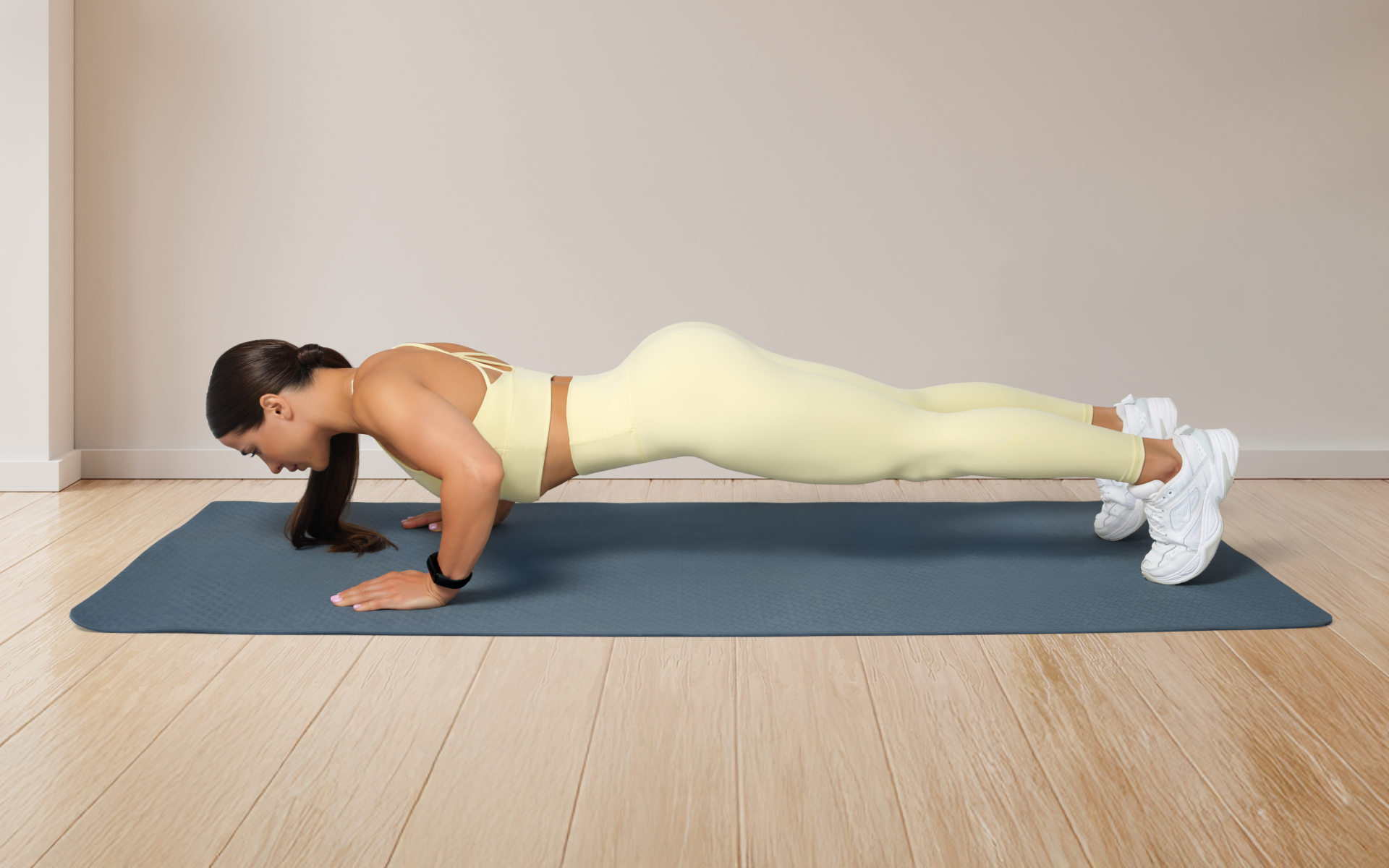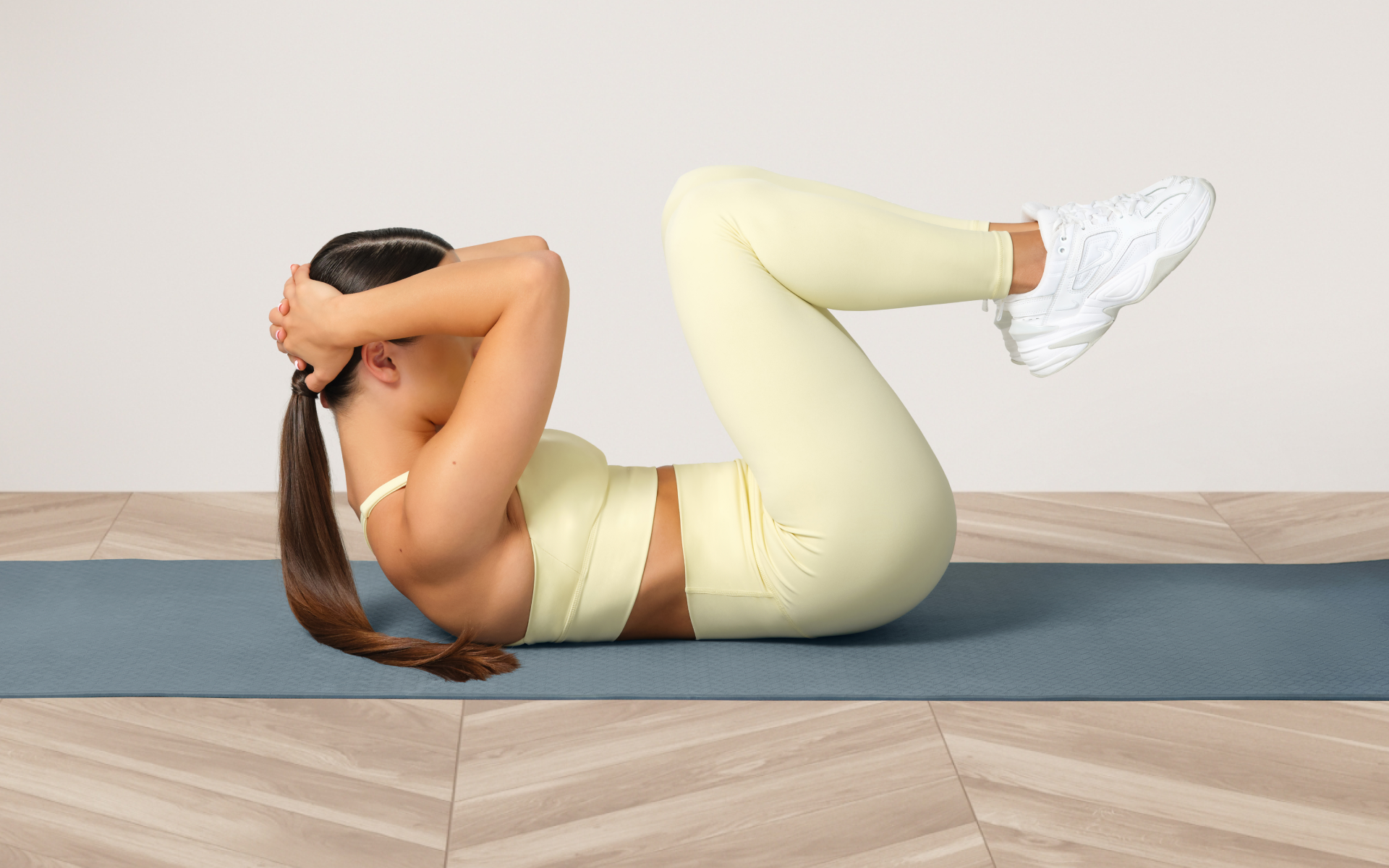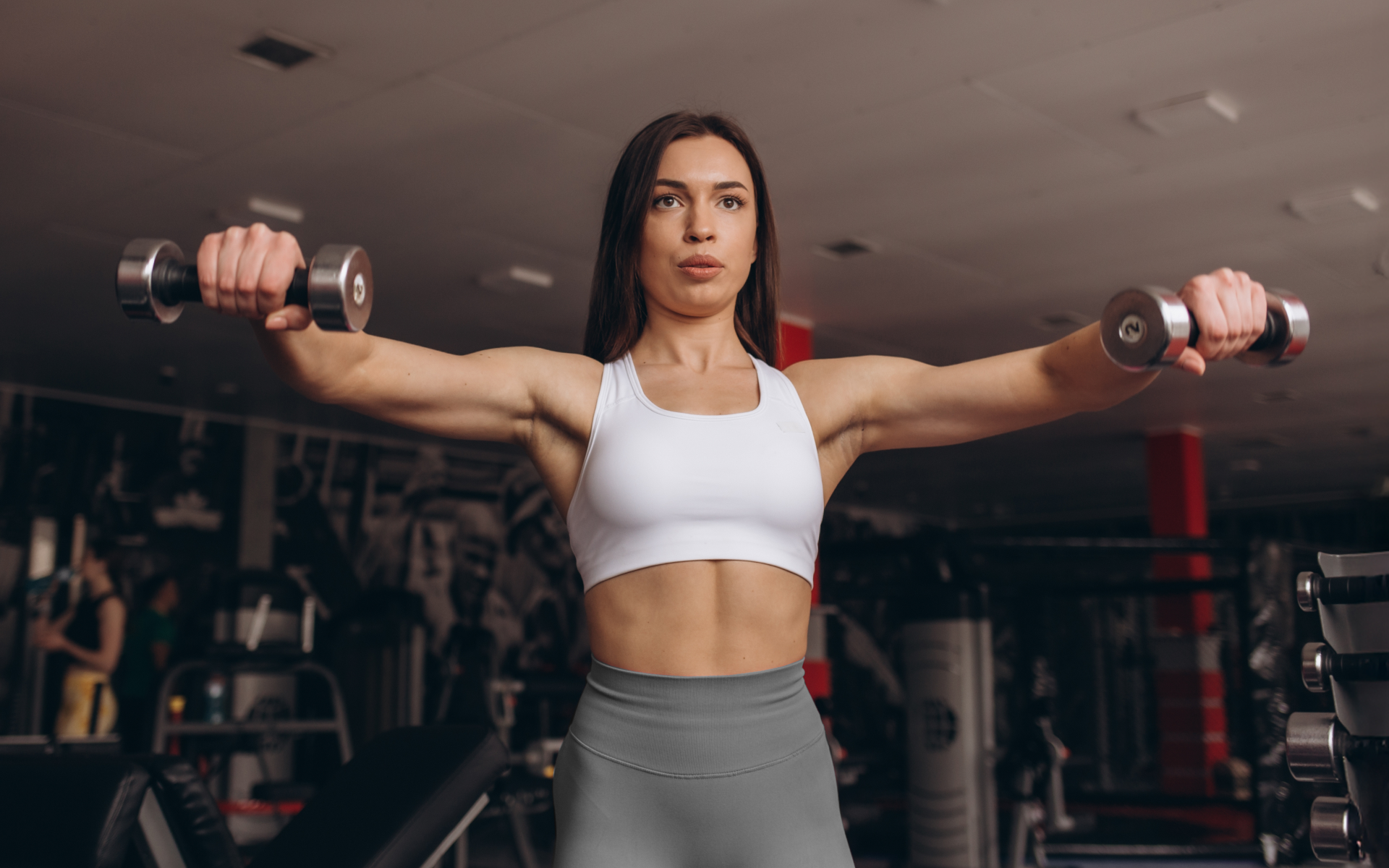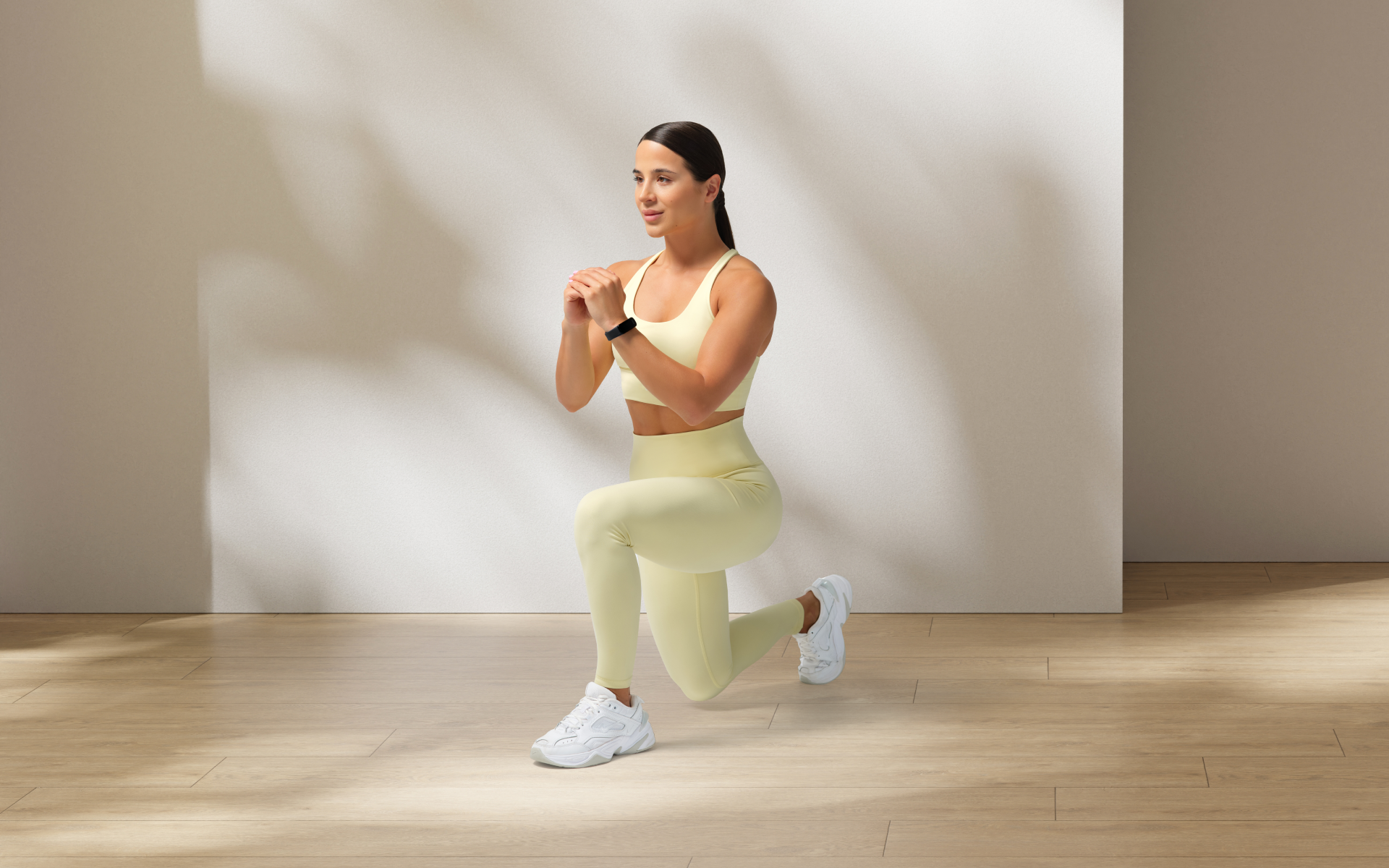You’ve got gym access, but you don’t want to spend every waking hour there. At home, you lack the equipment for a complete workout, but you’re determined to build strength at the gym while developing impressive bodyweight skills in your living room. Does this sound familiar?
Many fitness enthusiasts face this precise dilemma. They want to maximize their gym sessions for raw strength gains while mastering bodyweight movements that showcase control, balance, and athleticism. The solution isn’t choosing one over the other, it’s about learning to combine both approaches strategically.
This comprehensive guide will show you exactly how hybrid calisthenics bridges the gap between traditional weight training and bodyweight mastery. You’ll discover how to structure routines that build serious strength in the gym while developing the kind of movement skills that turn heads and build functional fitness.
Why Is It Called Hybrid Calisthenics?
Hybrid calisthenics represents the strategic fusion of traditional calisthenics (bodyweight exercises) with weighted resistance training. The term “hybrid” perfectly captures this dual approach – combining the accessibility and movement patterns of bodyweight training with the progressive overload capabilities of weights.
This training philosophy emerged from the recognition that both methods offer unique advantages. Calisthenics excels at developing relative strength, body control, and functional movement patterns (1). Weight training provides superior progressive overload, which allows for precise strength and muscle development (2).
The concept isn’t entirely new – elite gymnasts have long supplemented their bodyweight training with weighted exercises. Olympic gymnasts frequently use weights to develop the raw strength that is needed for advanced skills, then apply that strength through bodyweight-specific movements.
Reasons why BetterMe is a safe bet: a wide range of calorie-blasting workouts, finger-licking recipes, 24/7 support, challenges that’ll keep you on your best game, and that just scratches the surface! Start using our app and watch the magic happen.
Examples of Hybrid Calisthenics Integration
Upper-Body Combinations:
- Bench press for raw pushing strength + planche progressions for body control
- Weighted pull-ups for vertical pulling power + front lever progressions for isometric strength
- Overhead press for shoulder stability + handstand push-up variations for movement mastery
Lower-Body Applications:
- Barbell squats for leg strength + pistol squat progressions for unilateral control
- Deadlifts for posterior chain power + single-leg deadlift variations for balance
This approach is practiced by strength athletes, gymnasts, and fitness enthusiasts who understand that excluding tools from your training arsenal limits your potential.
Read more: Getting into Calisthenics: Master Basic Skills, No Gym Required
What Is the Main Difference Between Regular and Hybrid Calisthenics?
Understanding the distinctions between traditional and hybrid calisthenics will help you make informed decisions about your training approach.
Exercise Selection and Progression
Regular calisthenics relies exclusively on bodyweight progressions. To increase difficulty, you manipulate leverage, body position, or range of motion (3). For example, progressing from regular push-ups to one-arm push-ups, or from tuck planches to full planches.
Hybrid calisthenics incorporates both bodyweight progressions and weighted exercises. You might use weighted dips to build raw pressing strength, then apply that strength through planche training for movement-specific adaptation.
Progressive Overload Methods
Regular calisthenics achieves overload through:
- Advancing to harder progressions
- Increasing hold times for isometric exercises
- Adding repetitions within the same progression
- Manipulating leverage (moving from easier to harder body positions)
Hybrid calisthenics utilizes additional overload methods:
- Adding external weight to exercises
- Using resistance bands for assistance or added difficulty
- Incorporating tempo variations with weights
- Combining isometric holds with dynamic weighted movements
Training Flexibility and Adaptability
Regular calisthenics requires minimal equipment, but can be limited by strength plateaus. Once you’ve mastered certain progressions, advancement becomes increasingly challenging without external loading (1).
Hybrid calisthenics offers greater adaptability. You can train at home with bodyweight exercises and supplement with gym sessions for weighted work. This approach allows for continued progression, even when bodyweight-only methods plateau.
Skill Development vs. Strength Building
Regular calisthenics emphasizes skill acquisition and movement mastery. The focus centers on perfecting complex bodyweight movements such as muscle-ups, planches, and human flags.
Hybrid calisthenics balances skill development with raw strength building. You develop the strength foundation through weights, then apply that strength through bodyweight skill work.
Is a Hybrid Calisthenics Routine Good?
Hybrid calisthenics offers compelling advantages for most trainees, although success is dependent on proper implementation and alignment with your goals.
- Enhanced Strength Development
Combining weights with bodyweight training accelerates strength gains beyond what either method achieves alone. Research has consistently shown that varied loading patterns stimulate greater strength adaptations than single-modality training (4).
Weighted exercises allow for precise progressive overload in small increments (5). While progressing from a tuck planche to an advanced tuck planche might take months, you can typically add 2.5 pounds to your bench press weekly, providing consistent strength stimulus.
- Improved Movement Quality and Control
Bodyweight exercises develop proprioception and kinesthetic awareness (6) that weighted exercises often miss. When you perform a handstand push-up, you’re not just pressing weight, you’re controlling your entire body in space while managing balance and alignment.
This enhanced body control translates to better form in weighted exercises. Athletes who master bodyweight movements typically demonstrate superior technique and stability when lifting weights.
Whether you’re a workout beast or just a beginner making your first foray into the world of fitness and dieting – BetterMe has a lot to offer to both newbies and experts! Install the app and experience the versatility first-hand!
- Reduced Injury Risk Through Balanced Development
Hybrid training addresses muscle imbalances more comprehensively than single-modality approaches. While bench pressing builds raw pushing strength, planche training strengthens the posterior deltoids and scapular stabilizers that are often neglected in traditional weight training.
This balanced development reduces injury risk and improves long-term joint health. You’re not just building strength, you’re building resilient, well-rounded athleticism.
- Greater Training Variety and Motivation
The variety inherent in hybrid training combats training monotony and maintains long-term motivation. Instead of repeating the same weighted exercises indefinitely, you can alternate between strength-focused gym sessions and skill-focused home workouts.
This variety also prevents overuse injuries that are common in repetitive training patterns (7). Your joints and nervous system get varied stimuli, which promotes better recovery and adaptation.
- Enhanced Functional Strength Transfer
Bodyweight exercises often demonstrate greater transfer to real-world activities and sports performance. The ability to manipulate your body through space – jumping, climbing, balancing – requires the kind of integrated strength that can be developed through hybrid training (8).
- Accessibility and Flexibility
Hybrid training adapts to various circumstances. When you can’t access a gym, bodyweight exercises maintain your training consistency. When you need to break through strength plateaus, weighted exercises provide the necessary overload.
- Training Considerations
Time Investment: Hybrid training may require more time investment than focusing on a single modality. Developing both weighted strength and bodyweight skills demands attention to multiple movement patterns and progressions.
Complexity: Programming hybrid routines requires understanding both weight training and calisthenics progressions. Poor integration can result in overtraining or imbalanced development.
Equipment Requirements: While less equipment-dependent than pure weight training, hybrid calisthenics still benefits from access to both gym facilities and basic home equipment such as pull-up bars and rings.
Goal Specificity: If your sole goal is maximal strength in powerlifting movements, pure weight training may be more efficient. Similarly, if you only care about advanced calisthenics skills, traditional bodyweight training could be optimal.
For more insights on how bodyweight and weight training compare for building different types of physiques, explore calisthenics vs weights physique.
What Is a Hybrid Calisthenics Workout Plan?
Here’s a complete hybrid calisthenics program designed to maximize both your gym sessions and home workouts. This plan alternates between two full-body routines throughout the week.
Weekly Schedule Structure
Monday: barbell/weight training day (gym)
Tuesday: rest or light activity
Wednesday: bodyweight training day (home)
Thursday: rest or light activity
Friday: barbell/weight training day (gym)
Saturday: bodyweight training day (home)
Sunday: rest
Routine A: Barbell/Weight Training Day
This gym-focused routine builds raw strength that transfers to your bodyweight training. Perform 3-4 sets of 5-8 repetitions with 3-5 minutes rest between sets.
- Bench Press
Position yourself on the bench with your feet firmly planted. Grip the bar with your hands slightly wider than shoulder-width apart. Lower the bar to your chest with control, pause briefly, then press explosively back to the starting position. Maintain tight shoulder blades throughout the movement.
- Pull-ups
Hang from the bar with your hands slightly wider than shoulder-width apart. Pull yourself up until your chin clears the bar, focusing on initiating the movement from your lats. Lower with control to full arm extension.
- Bent-Over Rows
Hinge at your hips with your knees slightly bent, maintaining a neutral spine. Pull the bar to your lower chest/upper abdomen, squeezing your shoulder blades together. Lower the weight with control.
- Overhead Press
Stand with your feet hip-width apart and your core braced. Press the bar straight overhead, finishing with your arms locked out and the bar over your shoulders. Lower the bar to shoulder level with control.
- Back Squat
Position the bar on your upper back with your feet shoulder-width apart. Descend by pushing your hips back and your knees out, maintaining an upright torso. Drive through your heels to return to standing.
- Deadlift
Stand with your feet hip-width apart, bar over your mid-foot. Hinge at your hips to grip the bar, then drive through your heels while lifting your chest to stand tall. Reverse the movement to lower the weight.
Routine B: Bodyweight Training Day
This home routine develops movement skills and applies the strength that you’ve built in the gym. Perform progressions appropriate to your current ability level.
- Handstand Push-Up Progression
Start with wall-supported handstand push-ups or pike push-ups if you’re still developing handstand holds. Progress toward freestanding handstand push-ups by gradually reducing wall support. Focus on maintaining straight body alignment throughout the movement.
- Front Lever Progression
Start with tuck front levers, holding for 10-30 seconds depending on your strength level. Progress through advanced tuck, one-leg, and straddle positions toward the full front lever. Maintain a hollow body position and straight arms throughout.
- Planche Progression
Start with planche leans, gradually shifting more weight forward over your hands. Progress through frog stands, tuck planches, and advanced tuck positions. Focus on protracted shoulders and a strong wrist position.
- Pistol Squat Progression
Start with assisted pistol squats using a suspension trainer or elevated surface. Progress by reducing assistance and increasing your range of motion. Maintain balance and control throughout the full range of motion.
- Muscle-Up Progression
Begin with high pull-ups and deep ring dips separately. Practice the transition movement with assistance. Combine the movements once both components are strong enough to support the full movement.
- L-Sit Progression
Start with bent-knee L-sits on parallettes or parallel bars. Progress by straightening your legs and increasing hold time. Focus on depressing your shoulders and maintaining straight arms.
Set and Rep Recommendations:
- Isometric holds: 3-5 sets of 10-60 seconds (based on ability)
- Dynamic movements: 3-4 sets of 3-8 repetitions
- Rest periods: 2-4 minutes between sets
Progression Guidelines:
- Increase hold times before advancing to harder progressions
- Master current progression for 3-4 weeks before advancing
- Focus on quality over quantity – perfect form is non-negotiable
For a deeper dive into effectively combining these training methods, check out calisthenics and weight training strategies.
Read more: 5 Hardest Calisthenics Moves Ranked by Difficulty
Can You Gain Muscle with Hybrid Calisthenics Training?
Yes, hybrid calisthenics training effectively promotes muscle hypertrophy through multiple scientifically supported mechanisms.
- Mechanical Tension
Both weighted exercises and advanced bodyweight movements create significant mechanical tension – the primary driver of muscle growth (9). Heavy bench presses and challenging planche progressions both generate the high levels of muscle fiber tension that are necessary for hypertrophic adaptations.
Muscles respond to tension, regardless of whether it comes from external weights or bodyweight exercises. A study comparing weighted to bodyweight training found similar hypertrophic responses when exercises were matched for difficulty and volume (10).
- Progressive Overload
Muscle growth requires progressive overload – gradually increasing training demands over time (5). Hybrid training provides multiple avenues for progression:
- Weight training: Add load, reps, or sets
- Bodyweight training: Advance to harder progressions, increase hold times, or add repetitions
- Combined methods: Use weighted bodyweight exercises or resistance band modifications
This variety prevents plateaus that often limit single-modality training programs.
- Metabolic Stress
High-repetition bodyweight exercises and circuit-style hybrid workouts create metabolic stress – the accumulation of metabolites that contributes to muscle growth (11). The “burn” you feel during high-rep push-up variations or L-sit holds indicates metabolic stress that supplements the mechanical tension from heavier weighted exercises.
- Muscle Damage
Both training modalities create controlled muscle damage that stimulates repair and growth. The eccentric portions of movements – lowering phases of push-ups, pull-ups, and weighted exercises – generate particular muscle damage that drives hypertrophic adaptations (12).
- Time Under Tension
Bodyweight exercises often involve longer time under tension than traditional weight training. Isometric holds such as planches and front levers maintain continuous muscle tension for extended periods, which provides a unique hypertrophic stimulus that is often missing from explosive weight training (13).
- Volume Considerations
Research has indicated that training volume (sets × reps × load) has a strong correlation with muscle growth (14). Hybrid training allows for higher training volumes by distributing work across multiple exercise modalities, potentially leading to greater hypertrophic responses than single-modality approaches.
Reasons why BetterMe is a safe bet: a wide range of calorie-blasting workouts, finger-licking recipes, 24/7 support, challenges that’ll keep you on your best game, and that just scratches the surface! Start using our app and watch the magic happen.
Practical Applications for Hypertrophy
To maximize muscle growth with hybrid training:
Prioritize compound movements that work multiple muscle groups simultaneously (15). Both heavy squats and pistol squat progressions build leg muscle more effectively than isolation exercises.
Use appropriate rep ranges. Weight training in the 6-12 rep range combined with bodyweight progressions that challenge you in similar rep ranges optimizes hypertrophic stimulus (16).
Ensure adequate recovery. Muscle growth occurs during rest periods (17). The variety of hybrid training can aid recovery by alternating stress patterns while maintaining training frequency.
Focus on progressive overload. Whether you’re advancing to harder bodyweight progressions or adding weight to your exercises, consistent progression drives continued muscle growth.
For more information on using calisthenics specifically for muscle building, explore calisthenics to build muscle techniques and strategies.
Yes, calisthenics can absolutely help you achieve a lean, muscular physique. Advanced bodyweight exercises such as muscle-ups, planches, and one-arm push-ups require significant muscle mass and strength. However, getting “ripped” primarily depends on body fat percentage, which is controlled through nutrition rather than exercise selection. Calisthenics burns calories and builds muscle, but you’ll need to maintain a caloric deficit through proper nutrition (18) to reveal muscle definition. No single exercise builds the most muscle universally. Compound movements that work multiple muscle groups simultaneously – such as squats, deadlifts, pull-ups, and push-ups – generally provide the greatest muscle-building stimulus per exercise (15). For hybrid training, combining heavy compound lifts with challenging bodyweight progressions maximizes muscle development across all the major muscle groups while improving functional strength and movement quality. Calisthenics appears impressive as it demonstrates complete mastery over your body weight and showcases relative strength, coordination, and body control that most people lack. The duration of a calisthenics workout can vary depending on individual goals and fitness levels. For beginners, it’s recommended that you start with shorter sessions (around 20-30 minutes) and gradually increase the duration as your strength and endurance improve. Advanced trainees may opt for longer workouts ranging from 45 minutes to an hour or more. However, quality over quantity is the key in calisthenics training, so it’s important to focus on proper form and intensity rather than simply trying to hit a certain time limit.Frequently Asked Questions
Can I get ripped from calisthenics?
Which exercise builds the most muscle?
Why is calisthenics so impressive?
How long should a calisthenics workout last?
The Bottom Line
Hybrid training can be a highly effective and enjoyable way to achieve well-rounded fitness and performance goals. By combining the principles and methods of different types of exercise, you can see improvements in your strength, endurance, agility, balance, coordination, and more. Whether you’re new to fitness or you’re looking to take your training to the next level, incorporating hybrid workouts into your routine can help you achieve your full potential.
DISCLAIMER:
This article is intended for general informational purposes only and does not serve to address individual circumstances. It is not a substitute for professional advice or help and should not be relied on for making any kind of decision-making. Any action taken as a direct or indirect result of the information in this article is entirely at your own risk and is your sole responsibility.
BetterMe, its content staff, and its medical advisors accept no responsibility for inaccuracies, errors, misstatements, inconsistencies, or omissions and specifically disclaim any liability, loss or risk, personal, professional or otherwise, which may be incurred as a consequence, directly or indirectly, of the use and/or application of any content.
You should always seek the advice of your physician or other qualified health provider with any questions you may have regarding a medical condition or your specific situation. Never disregard professional medical advice or delay seeking it because of BetterMe content. If you suspect or think you may have a medical emergency, call your doctor.
SOURCES:
- Bodyweight Training: A Return To Basics (2010, journals.lww.com)
- Improving muscle size with Weider’s principle of progressive overload in non-performance athletes (2021, researchgate.net)
- Exercise progression and regression (n.d., us.humankinetics.com)
- Effects of Varied Versus Constant Loading Zones on Muscular Adaptations in Trained Men (2016, pubmed.ncbi.nlm.nih.gov)
- Progressive Overload Explained: Grow Muscle & Strength Today (n.d., blog.nasm.org)
- Benefits of Bodyweight Training (2025, humankinetics.me)
- Overuse injuries in sport: a comprehensive overview (2018, josr-online.biomedcentral.com)
- The advantages of body-weight exercise (2024, health.harvard.edu)
- Anabolic signals and muscle hypertrophy – Significance for strength training in sports medicine(2025, sciencedirect.com)
- Effects of free weight and body mass‐based resistance training on thigh muscle size, strength and intramuscular fat in healthy young and middle‐aged individuals (2023, physoc.onlinelibrary.wiley.com)
- Role of metabolic stress for enhancing muscle adaptations: Practical applications (2017, pmc.ncbi.nlm.nih.gov)
- Pathophysiology of Exercise-Induced Muscle Damage and Its Structural, Functional, Metabolic, and Clinical Consequences (2020, pmc.ncbi.nlm.nih.gov)
- Isometric training and long-term adaptations: Effects of muscle length, intensity, and intent: A systematic review (2019, researchgate.net)
- Resistance Training Volume Enhances Muscle Hypertrophy but Not Strength in Trained Men (2019, journals.lww.com)
- Compound Exercises (n.d., physio-pedia.com)
- No Time to Lift? Designing Time-Efficient Training Programs for Strength and Hypertrophy: A Narrative Review (2021, link.springer.com)
- Why Rest Days Are Important for Muscle Building (n.d., blog.nasm.org)
- Optimal Diet Strategies for Weight Loss and Weight Loss Maintenance (2020, pmc.ncbi.nlm.nih.gov)
